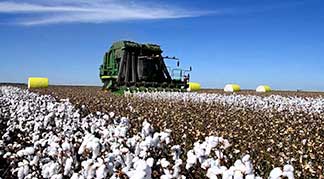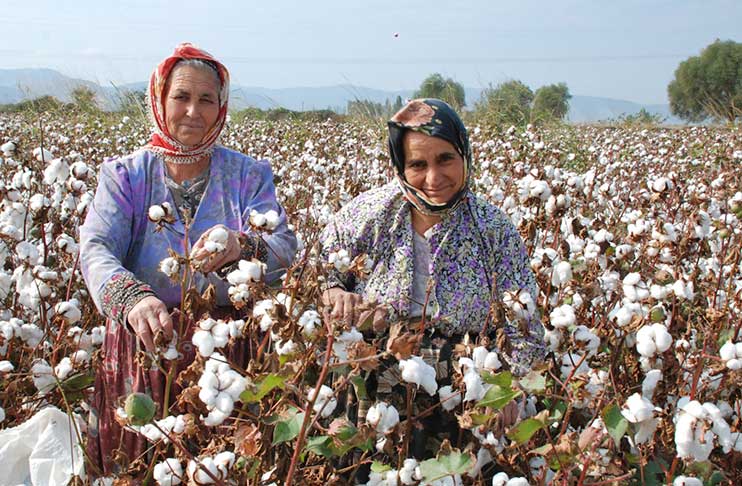
Reports on Turkey’s cotton production and consumption published by United States Department of Agriculture (USDA) Foreign Agricultural Service in August 2018 reveals interesting figures. According to the report, in the 2018/19 marketing year (MY) Turkish cotton crop is estimated to be 550 thousand hectares and 920 thousand tons (4.2 million bales). Despite the larger planted area than early season’s estimate, excessive rains and cool weather necessitated a second planting and stimulated pest attacks in all regions, which lowered yields.
Cotton production
In order to promote cotton planting, the Turkish government had increased the seed cotton production bonus during the previous six years in a row until MY 2017/18 but kept it the same for MY 2018/19 crop. Accordingly, MY 2018/19 seed cotton production support is TL 0.80 per kilogram (paid on seed cotton). This support is provided only to certified seed users.
Turkey became part of the Better Cotton Initiative (BCI) four years ago. Acreage under this program is increasing and is expected to be about 60,000 MT of BCI cotton in MY 2018/19. In general, Turkish people prefer cotton over man manmade fibers due to comfort but there is no official production number for total cotton yarn and cotton fabric production available.
Domestic consumption will decrease for cotton
Turkish textile industry had a good year during MY 2017/18, and domestic consumption of cotton increased to 1.6 MMT (7.3 Million bales), up from 1.4 MMT (6.5 Million bales) the year before. However, since the beginning of MY 2018/19, the Turkish economy has been is going through a major downturn, and the Turkish Lira is experiencing devaluation, in addition to increases in inflation. While devaluation will help Turkey’s exports to foreign markets, particularly to countries in the European Union, the increase in domestic inflation will limit domestic consumption of textiles. As a result, MY 2018/19 domestic consumption of cotton expected decline to about 1.55 MMT (7.1 Million bales).
Turkish mills have been investing in new machinery and technology to increase quality and lower the cost to get ahead in the very competitive international textile trade. In recent year’s domestic consumption is also supported by increase in tourism; low priced, fashionable outfits are preferred by tourists from the Middle East and Russia. Turkey is one of the leading tourist destinations in the world and receives about 35 million visitors annually.
Cotton import increased by 14%
Total cotton imports for the first eleven months of MY 2017/18 (Aug-July) were about 800,000 MT (3.6 Million bales); which is up about fourteen percent compared to the same period last year. The U.S. provided about forty-three percent of the imports; which is 340,000 MT (1.56 million bales), despite the three percent antidumping charges. Turkey generally imports high quality cotton needed for the textile sector from the United States. Brazil (105,000 MT), Greece (103,000 MT), and Turkmenistan (50,000 MT) were the other leading suppliers during MY 2017/18. Despite the ongoing conflict in Syria, about 20,000 MT of Syrian cotton also found its way to the Turkish market.
Cotton export is 64.800 tons
Turkey total cotton exports were 64,800 MT during the first eleven months of MY2017/18; of which 28,500 MT were for textile use; and 36,300 MT hydrophilic cotton for medical use. Bangladesh (3,750 MT), Vietnam (2,000 MT) and India (1,600 MT) were the leading foreign destinations; for Turkish cotton for textile use. About 13,600 MT of cotton also exported to Mersin and Kayseri Free Trade Zone; with a possibility of being re-imported later.


